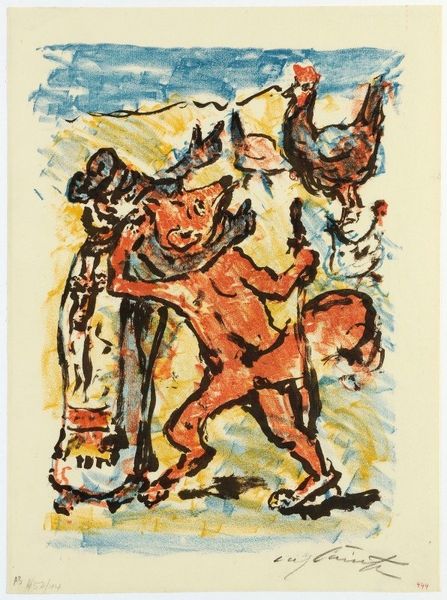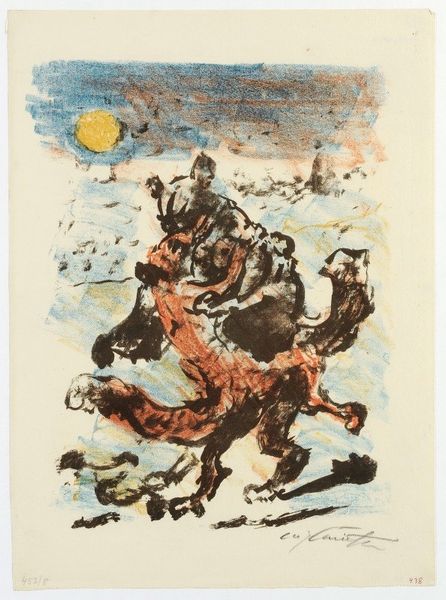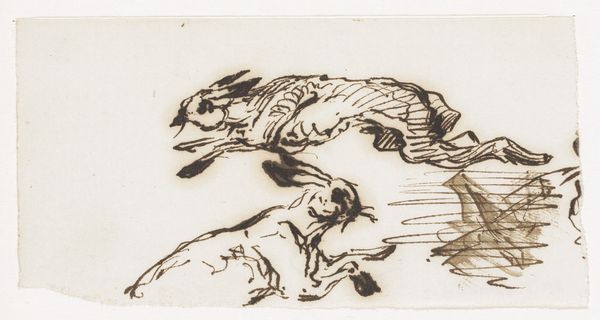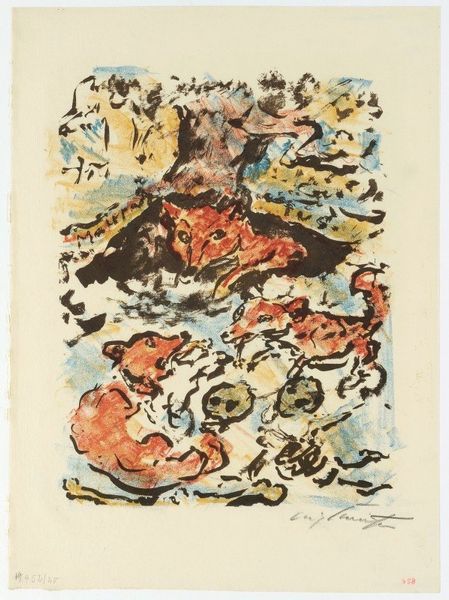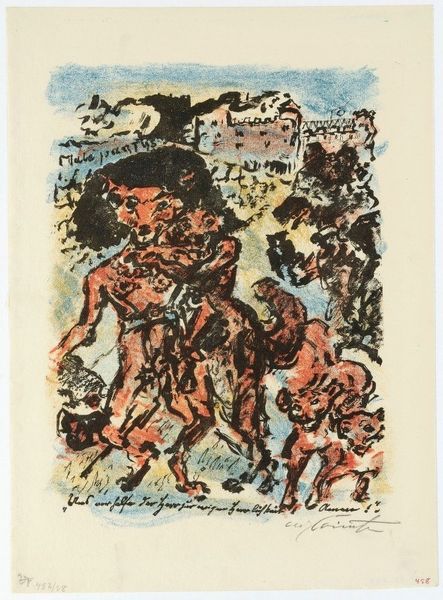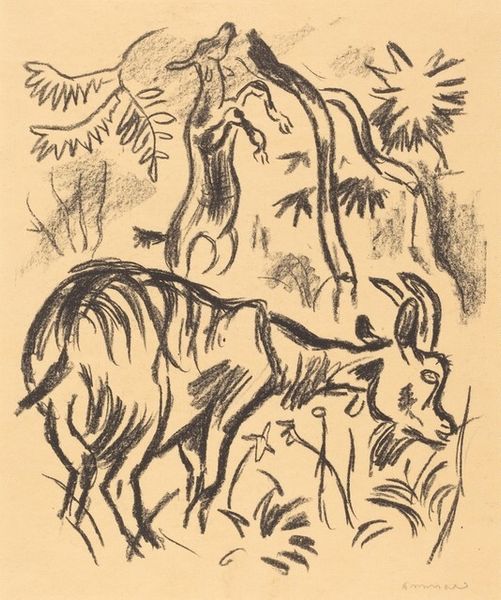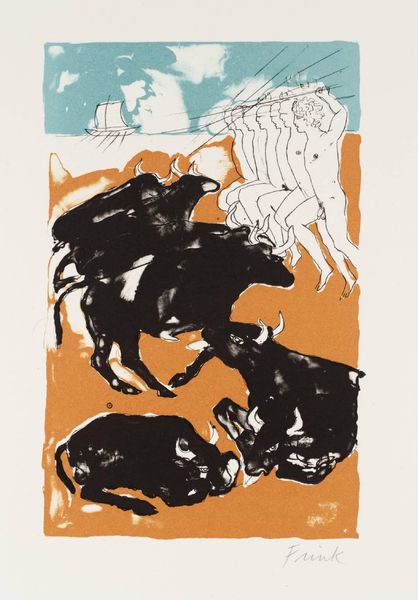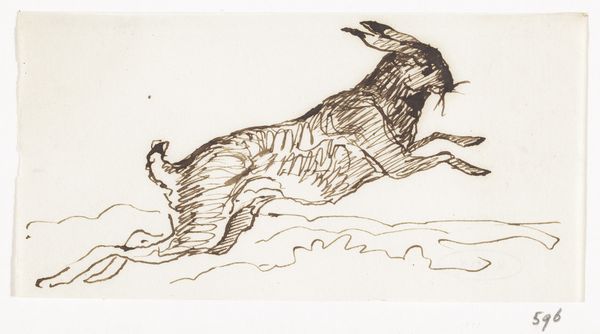
drawing, watercolor, ink
#
drawing
#
narrative-art
#
ink painting
#
animal
#
german-expressionism
#
watercolor
#
ink
#
expressionism
#
naive art
#
watercolour illustration
Copyright: Public Domain: Artvee
Editor: Here we have "Reinecke Besteigt Giremund, Isegrims Frau," a 1920 ink and watercolor drawing by Lovis Corinth. The stark contrast and almost cartoonish figures give it an unsettling, dreamlike quality. What do you make of it? Curator: Well, knowing that Corinth was associated with German Expressionism certainly frames it. The figures are animals from the medieval story *Reineke Fuchs*. The narrative art is rendered through the lens of this particular cultural context after the first World War and the collapse of the German monarchy. This illustration is also clearly infused with political critique: Reineke (Reynard) is portrayed deceiving and dominating Isegrims Frau, Isegrim’s Wife! Think about it in terms of power structures prevalent during the era, where authority and social hierarchy were being challenged. Does that suggest anything to you? Editor: So, the animal figures aren't just animals; they're stand-ins for societal roles and power dynamics. Given that it was made in 1920, could the "dominating" fox and the other canid, wolf, figure represent social changes happening in the Weimar Republic? Curator: Precisely! Consider how artists after World War One utilized historical or allegorical subjects to address their contemporary reality while maybe masking their intent. This also appeared after Corinth had a stroke that seriously impacted his life. Editor: That's really insightful! Seeing it now, it doesn't feel so much like a strange dream, and more like a reflection of socio-political realities. Thanks! Curator: You’re welcome! It reminds us that art never exists in a vacuum, but always reflects, and is reflected by, the socio-political and personal context of its creation and reception.
Comments
No comments
Be the first to comment and join the conversation on the ultimate creative platform.


